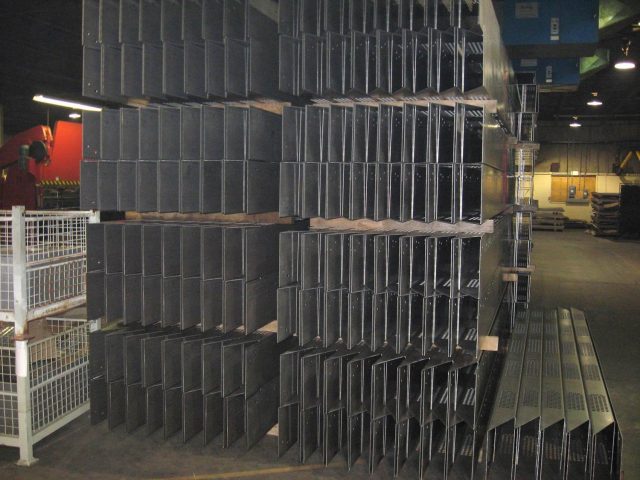When starting a new commercial or industrial building project, structural steel fabricators are essential for the successful completion of the project. Structural steel fabrication is vital to all sectors of industry. Unlike other common building materials such as concrete, wood, or aluminum, the sheer strength of structural steel is higher than its density which makes it an excellent choice material for manufacturing, construction, components, and building. Structural steel fabricators take steel and other metals and turn them into any desired shape or form.
Below, our steel fabricators answer some of their most commonly asked questions:
What is structural steel?
By definition structural steel is the steel used in the construction of bridges, office buildings, warehouses, hospitals, ships, tankers, docks, stadiums, skyscrapers, and more. Structural steel must hold the desired mechanical properties to meet a project’s applicable specifications such as strength, chemical composition, and shape. The main ingredients in structural steel, like any steel, are iron and carbon. Common additives found in addition to iron and carbon are manganese, alloys, and certain chemicals.
Due to its carbon composition, it is considered mild steel. However, that composition distinguishes structural steel from other steel. The carbon content ranges between 0.15 to 0.30 percent. Increasing the carbon content too much produces a material that is high in strength with low ductility. A low carbon content lowers the structural strength of the steel. Depending on how the steel will be used will determine the carbon level or content needed.
What is structural steel fabrication?
Structural steel fabrication is a complicated process. More than simply producing the steel required, it encompasses a whole series of processes to build the desired structure. Yes, it entails bending, cutting, and assembling all of the pieces together, but structural steel fabricators physically prepare the structural steel for building a bridge, say, by developing detailed drawings based upon the construction drawings designed by a structural engineer. Proper material must be selected and managed through a number of steps for fabricating—cutting, drilling, shopfitting with bolts and welding, painting or galvanizing where required, and then prepared for delivery.
What type of precautions should you consider?
Fabrication of structural steel is a complex process that should be done with safety in mind and undertaken with extreme care. Cutting, bending, welding, and other fabrication methods of metals pose a risk on shop floors. The chances of accidents and injuries occurring when performing these tasks are high. Noise can cause distractions or loss of concentration that can lead to an employee sustaining an injury. Mishandling tools, machinery, and materials can result in minor and major injuries.
Following safety protocols is an important precautionary measure. Shops should have a safety program in place and all fabricators should have safety training. When working with structural steel fabricators should use protective equipment while working on the shop floor. This would include safety goggles, helmets and shields, protective clothing and protective gloves, and the like. No flammable material such as cotton or gasoline should be in the vicinity of welding, nor should unauthorized personnel be allowed to use or handle tools and equipment on the shop floor.
What are the benefits of structural steel fabrication?
Structural steel offers many benefits suitable for fabrication projects, the first being its advantageous mechanical properties. It is durable, corrosion-resistant, high in strength, tensile, and comparatively lightweight option for construction. Steel is exceptionally adaptable and flexible as well and can be shaped, cut, and welded into any form as required. When it comes to affordability, mild steels and carbon steels tend to be less expensive than other metals such as copper, aluminum, or magnesium that are used in buildings. Structural steel is also made to last. It can withstand harsh conditions in harsh environments, withstand storms, and can be designed to withstand earthquakes. It can be coated with a fire-resistant and water-resistant material. Finally, structural steel is highly recyclable and an environmentally friendly building option.



